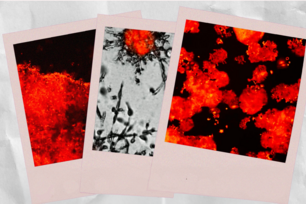Scientists Find New Player in Cell Death Pathway
CAMBRIDGE, Mass. — Research from Robert Weinberg’s lab at the Whitehead Institute has uncovered a much sought after piece of the puzzle of how cells use a protein called p53 to voluntarily die when the cell’s DNA is damaged. In fact, p53 is defective in 50% of human cancers allowing the cells to multiply despite DNA mutations.
For the first time, the researchers show that a human protein called hSir2 can bind to p53 and deactivate it by removing a chemical marker. The results, published in the October 19 issue of Cell, offer clues to how the p53-mediated cell death pathway works and suggests hSir2 as a potential cancer drug target.
"The p53 signaling pathway has taken on enormous importance since the discovery that it is inactivated in one way or another in virtually all types of human cancer cells. It may also play a prominent role in the apoptosis (cell suicide) that accompanies a number of other important diseases," says Weinberg.
For years, many cancer researchers have flocked to study p53—often called the guardian of the genome—as a means of understanding how the p53 protein acts as a tumor suppressor by selectively destroying stressed or abnormal cells. Most cancer cells have mutated p53, so this protective mechanism is shut down.
This research suggests a different mechanism by which a renegade cancer cell can rid itself of p53. "Many different cancers have p53 intact, so these cells must be using some alternative mechanism to escape cell death. Some may be able to over produce hSir2 to shut down p53 function," says Postdoctoral Fellow Homayoun Vaziri, lead author on the paper.
The researchers observed that when hSir2 was inactivated in cells, they became more sensitive to p53-mediated cell death. "This may mean hSir2 will make a good target for future cancer therapies," says Vaziri. "The hSir2 protein has a pocket on its surface, which could accommodate a small molecule. Potentially, a drug could be designed to inhibit the protein and make cells more sensitive to cell death with radiation or chemotherapy, which damage a cell’s DNA."
While researchers know that DNA damage causes cells to activate p53 by the addition of a chemical tag called an acetyl group, they still don’t know which proteins are actually adding the chemical tags. "With the clue of how p53 is deactivated through removal of the acetyl group, researchers can now work backward to try to identify the key players in p53 activation," adds Vaziri.
Citation
Vaziri, H., Dessain, S. K., Eaton, E. N., Imai, S. I., Frye, R. A., Pandita, T. K., ... & Weinberg, R. A. (2001). hSIR2SIRT1 functions as an NAD-dependent p53 deacetylase. Cell, 107(2), 149-159.
Topics
Contact
Communications and Public Affairs
Phone: 617-452-4630
Email: newsroom@wi.mit.edu


